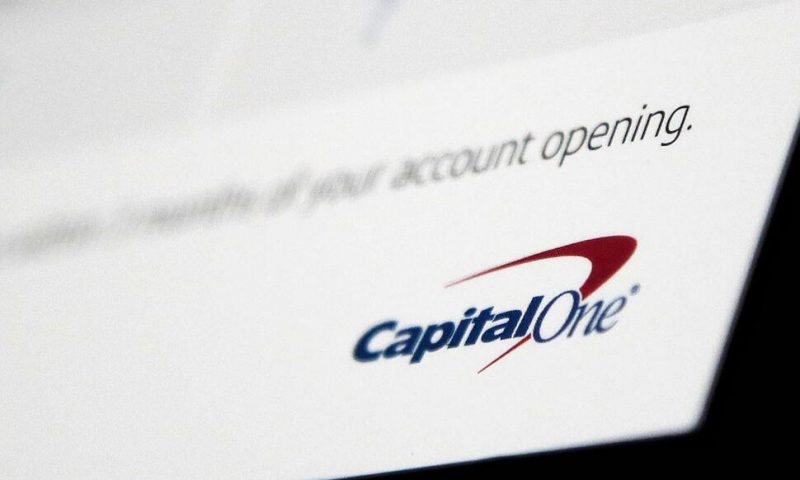The banking industry appears to have overdone it on overdraft fees.
NEW YORK — The banking industry appears to have overdone it on overdraft fees.
After decades of raking in billions of dollars from mostly poor Americans short of cash in their accounts, the biggest banks — under pressure from lawmakers and regulators — are slowly decreasing their reliance on the widely unpopular practice.
A number of large banks have taken steps this year that would reduce the amount they take in from overdraft fees, which they charge when customers make payments or withdrawals in excess of their account balance. Capital One, the nation’s sixth-largest bank, announced last week that it would end all overdraft fees next year. Other banks have made it harder for customers to trigger an overdraft fee.
Still, it’s unlikely the financial services industry will entirely wean itself off such a cash cow anytime soon.
“For many big banks, overdraft fees are still the steady, reliable, predictable, easy revenue that shareholders love,” said Rohit Chopra, director of the Consumer Financial Protection Bureau, in remarks last week where he directed the bureau to more closely examine bank overdraft practices.
Overdraft has its origins in banks providing a service — for a fee — to customers who may have not balanced their checkbook correctly and wanted a bank to honor a purchase. But the widespread use of debit cards changed this courtesy into a routine source of revenue. Some banks took advantage, for example, by reordering customers’ transactions, deducting big transactions first so that smaller payments would then trigger multiple overdraft fees. If a customer lacked funds in their account, a $5 purchase at a café could end up costing them $35, because of overdraft fees.
Overdraft fees, which started in the 1990s, became lucrative for the industry but at the same time made the banks a target for consumer advocates and their allies in Congress. After the financial crisis, Democrats put the CFPB and other regulators in charge of reining in overdraft fee revenues.
Frequent overdrafters, according to the CFPB, tend to skew toward those living paycheck to paycheck, and also are disproportionately Black and Latino. One of the top reasons given by Black and Latino Americans for choosing not to have a bank account, or being “unbanked,” is that they are trying to avoid bank fees.
Industry revenue from overdraft fees held fairly steady until last year when banks waived fees across the board in the first months of the pandemic, when millions of Americans lost their jobs and businesses were shuttered. Revenue from overdraft fees fell to $8.82 billion last year from $11.68 billion in 2019, according to data collected by S&P Global Market Intelligence.
Through the first nine months of this year, overdraft revenue totaled $6.13 billion, S&P Global’s data show.
Despite an outcry from some Democrats, regulators in Washington aren’t necessarily looking to do away with overdraft fees. In a speech last week, the acting head of the Office of the Comptroller of the Currency, Michael Hsu, said “low- to no-cost overdrafts” would allow those living paycheck to paycheck “to pay their bills on time, avoid high-cost alternatives and improve their credit profile.”
Hsu said recent changes to overdraft policies by some banks could serve as a model for the industry.
Regional banking giant PNC launched new account features such as low-balance alerts and a grace period that will help consumers avoid overdraft fees. PNC also plans to limit overdrafts to one per day.
Pennsylvania-based PNC told investors to expect its overdraft fee revenues to be down $125 million to $150 million annually as the bank rolls out the “Low Cash Mode” product. PNC earned nearly $273 million in overdraft fee revenue last year, according to S&P Global.
JPMorgan Chase, the nation’s largest bank by assets, earlier this year waived overdraft fees for customers whose accounts were overdrawn by $50 or less at the end of the business day. Last week, the bank said it will give customers 24 hours to bring their accounts back to $50 or less overdrawn to avoid a fee.
From 2015 through 2020, JPMorgan annually led the industry in overdraft fees collected. Through the first nine months of 2021, Wells Fargo took in the highest amount of overdraft fees, slightly more than $1 billion, according to S&P Global.
Back in June, Ally Financial, the 18th largest bank by assets, said it would get rid of overdraft fees across all of its products. Ally specifically cited the racial inequity seen with overdrafts as a reason to stop charging the fees.
“It was the right thing to do,” said Diane Morais, president of consumer and commercial banking products at Ally Bank.
Ally earned relatively little from overdraft fees. The bank told investors that getting rid of overdraft fees would have no material impact on its profits.
“This is likely a revenue line item that deteriorates over the long-term and banks will need to find other areas of fee revenue to offset this downward trend,” said Kyle Sanders, an analyst at Edward Jones who covers Wells Fargo, PNC and several other large retail banks.
One way that banks will likely make up a drop in overdraft fee income could be a return to monthly account fees, which would be an industry shift after decades of advertising “free checking” to their customers. Both Wells Fargo and Bank of America charge $5 a month to use accounts that do not allow customers to overdraft.

